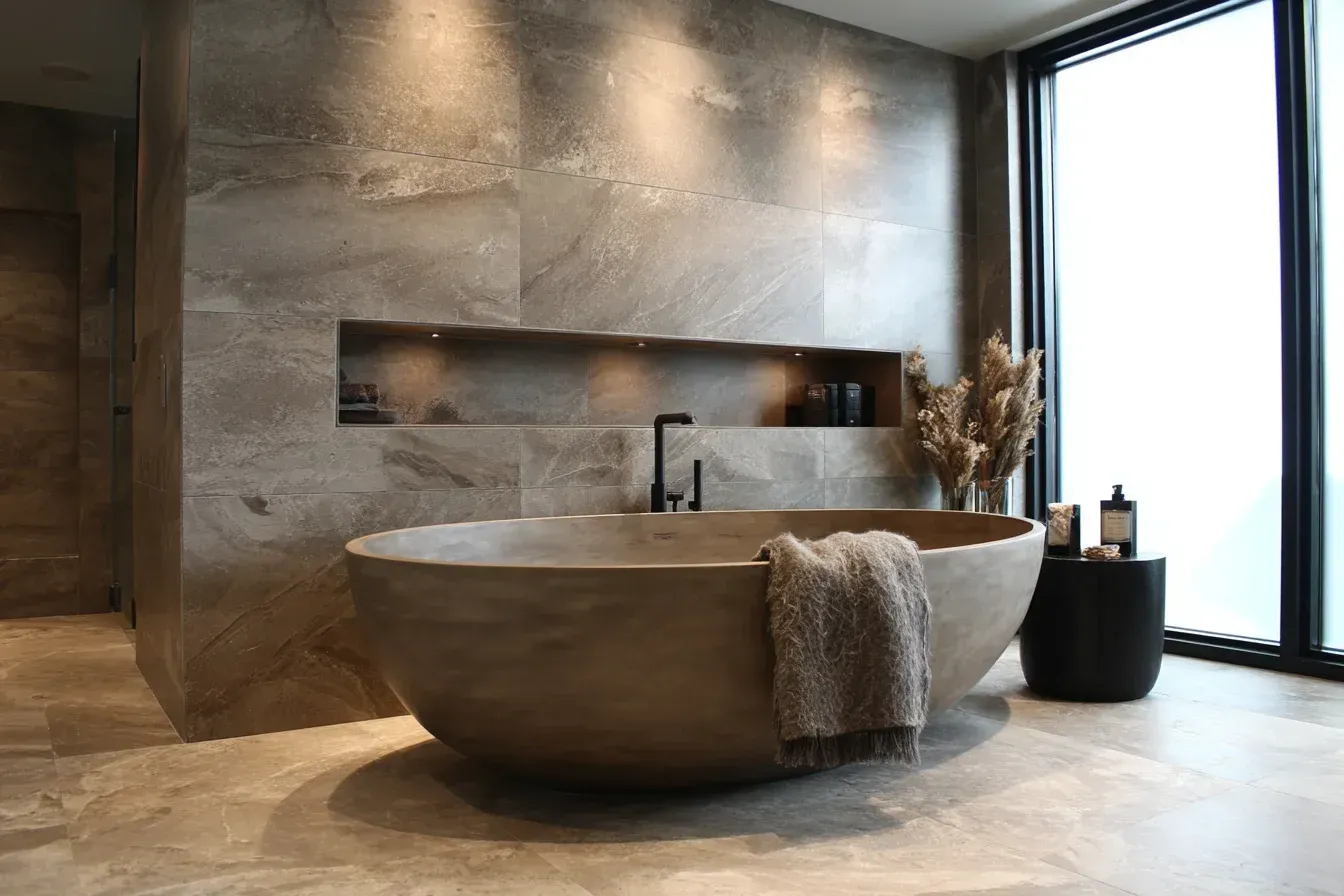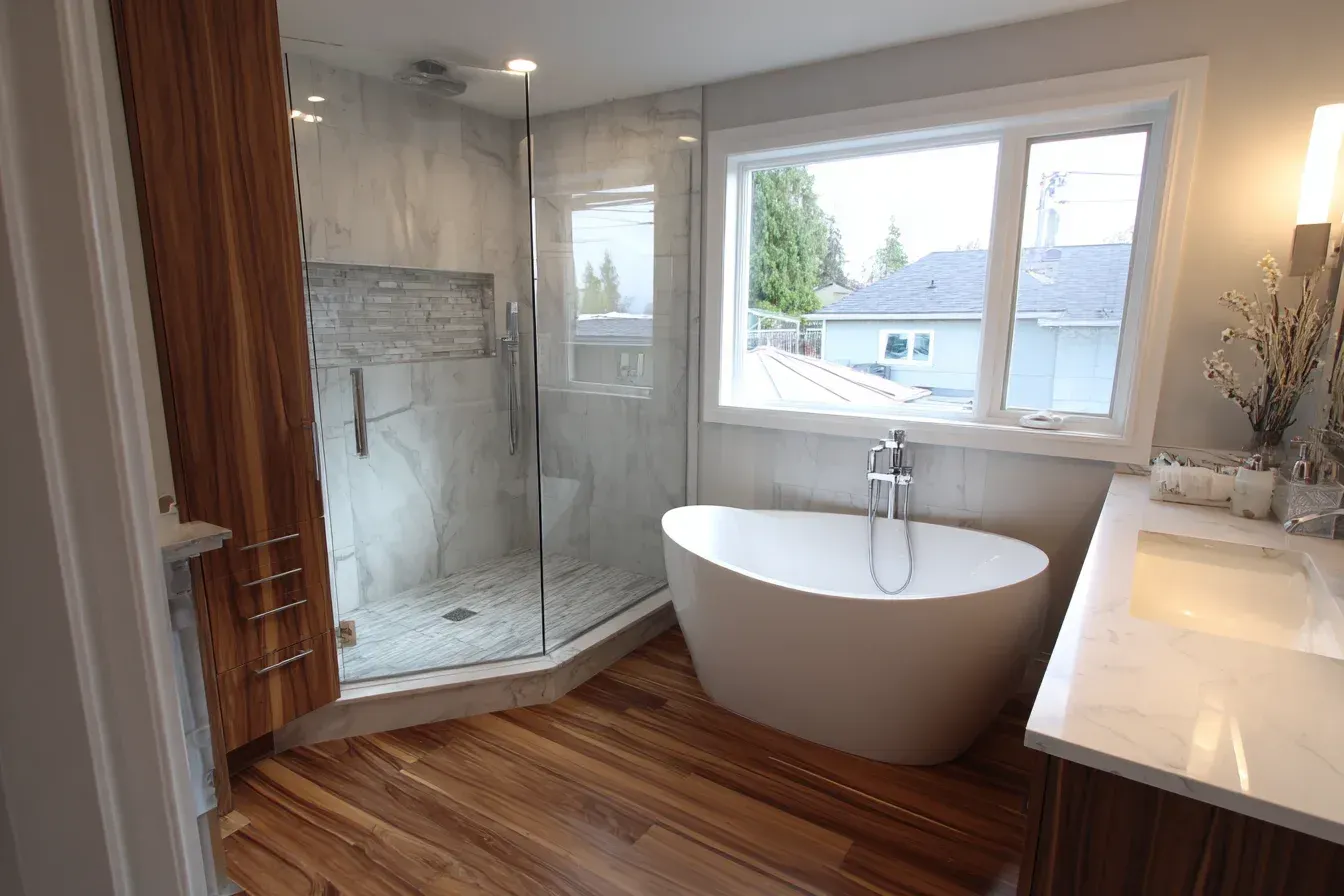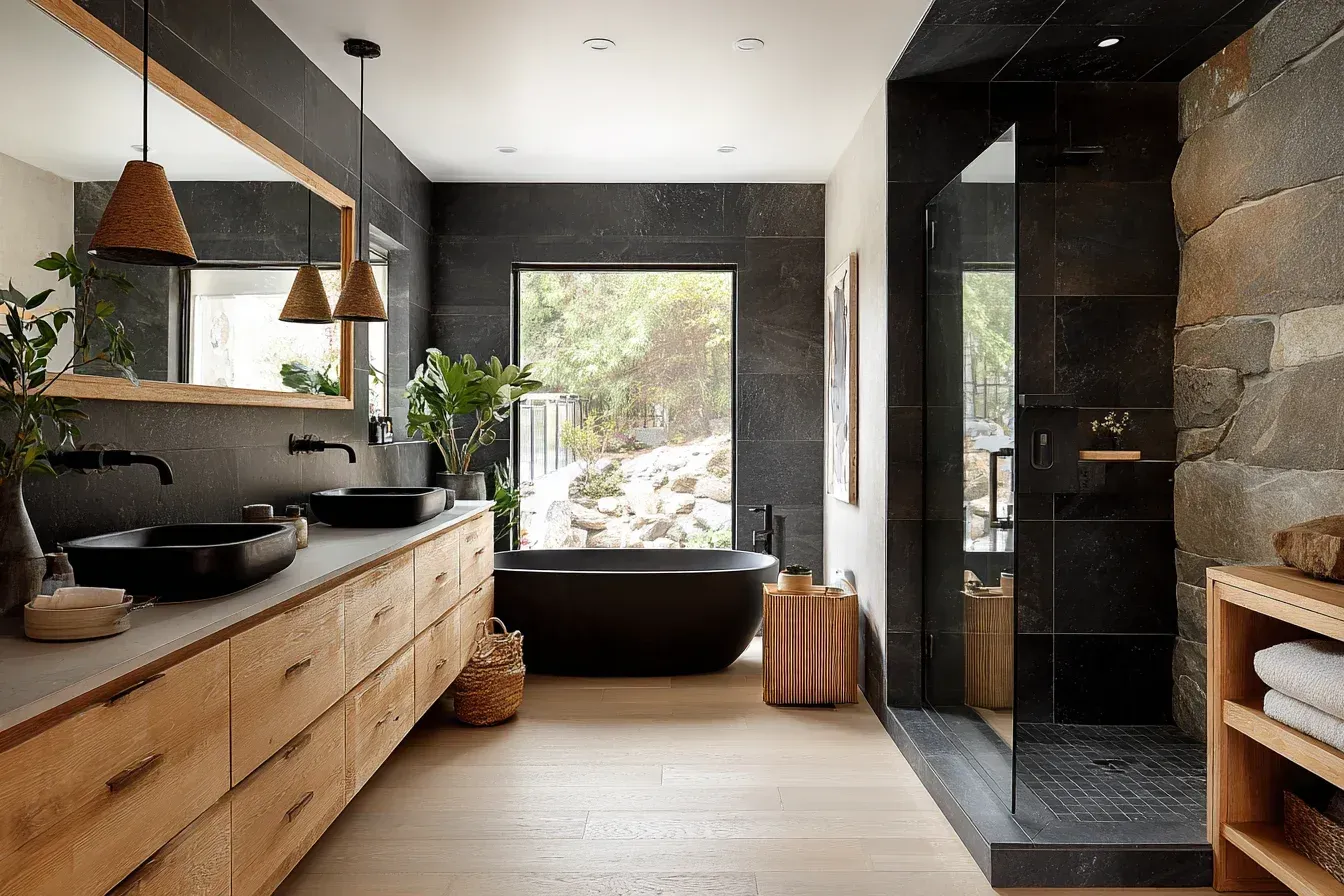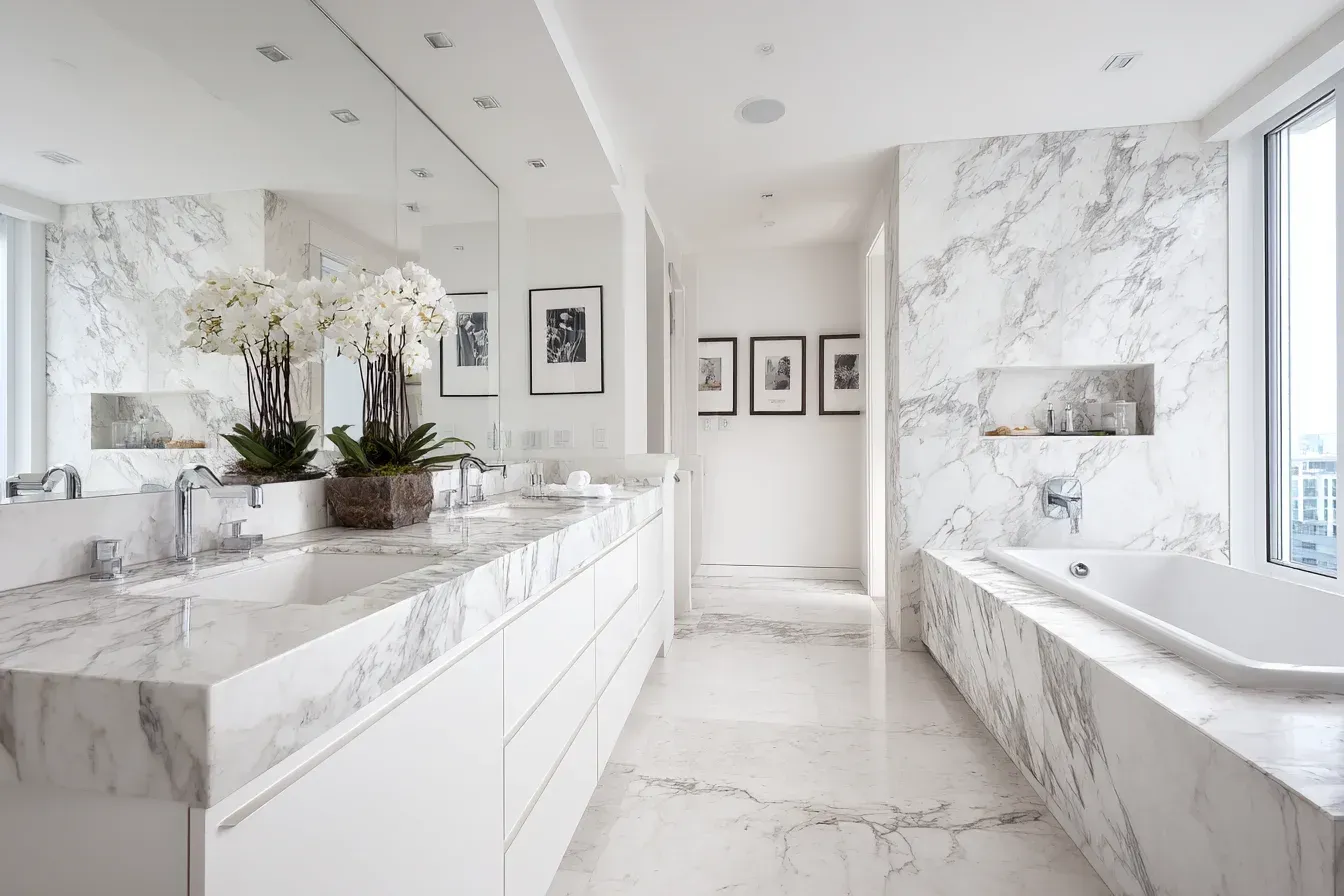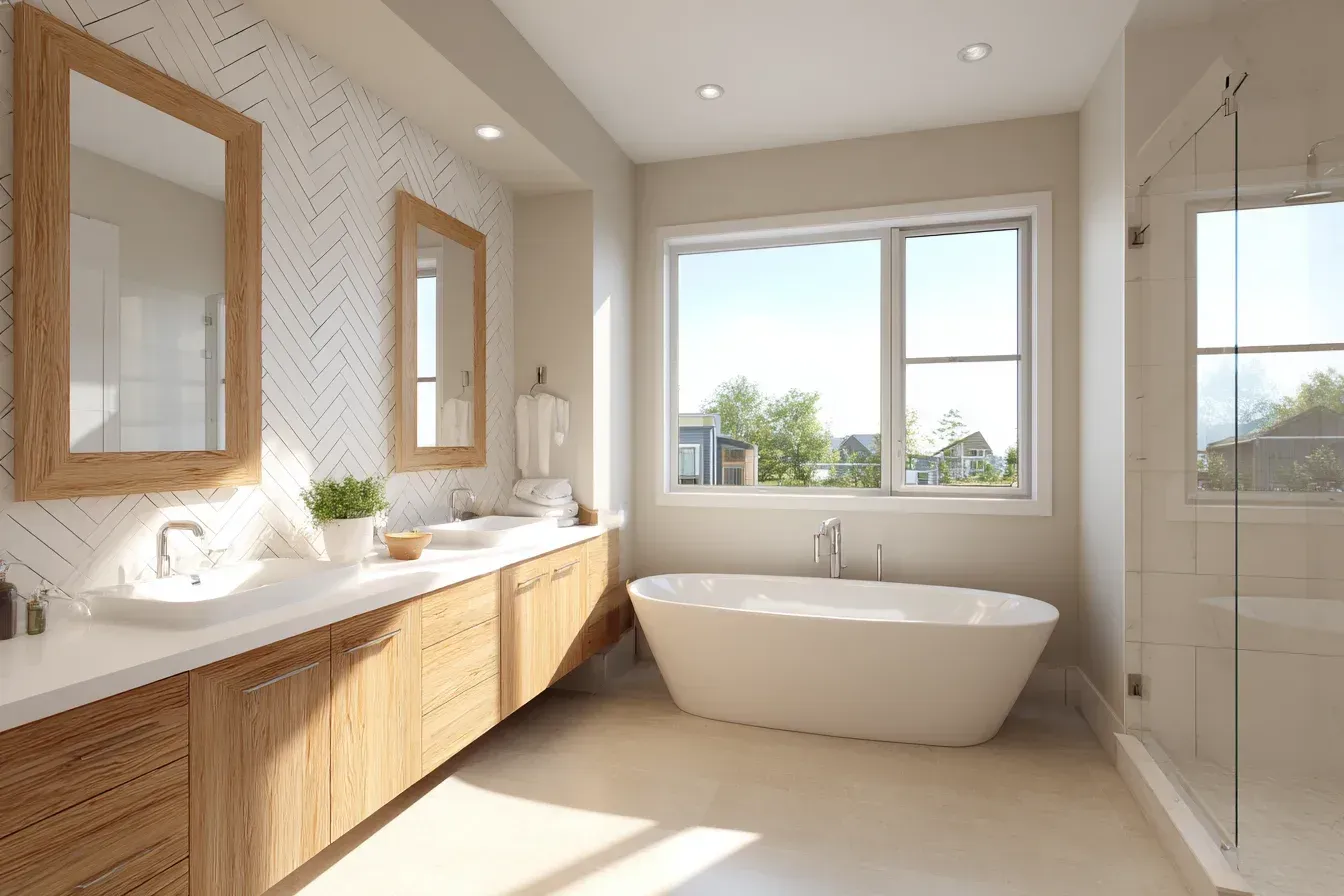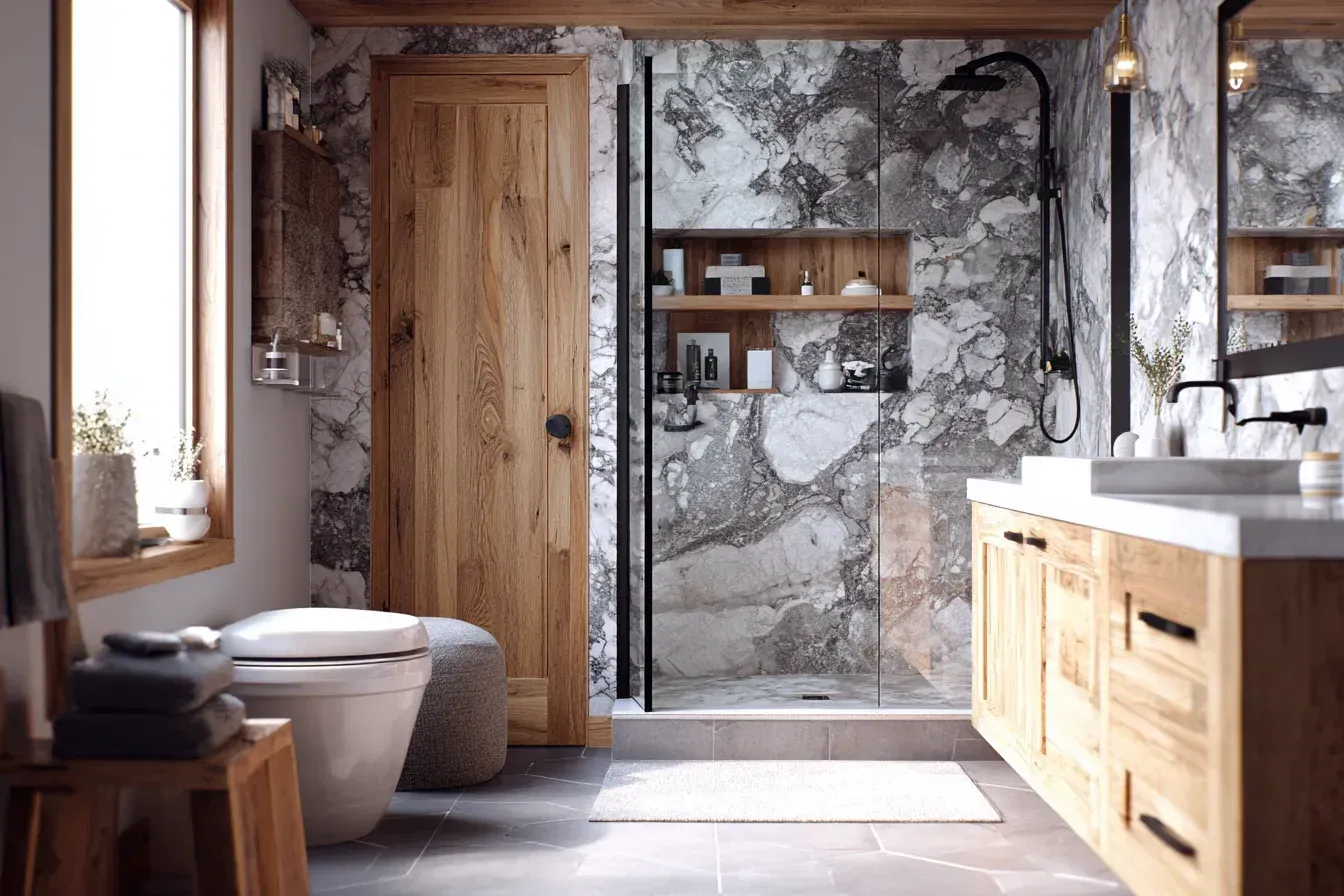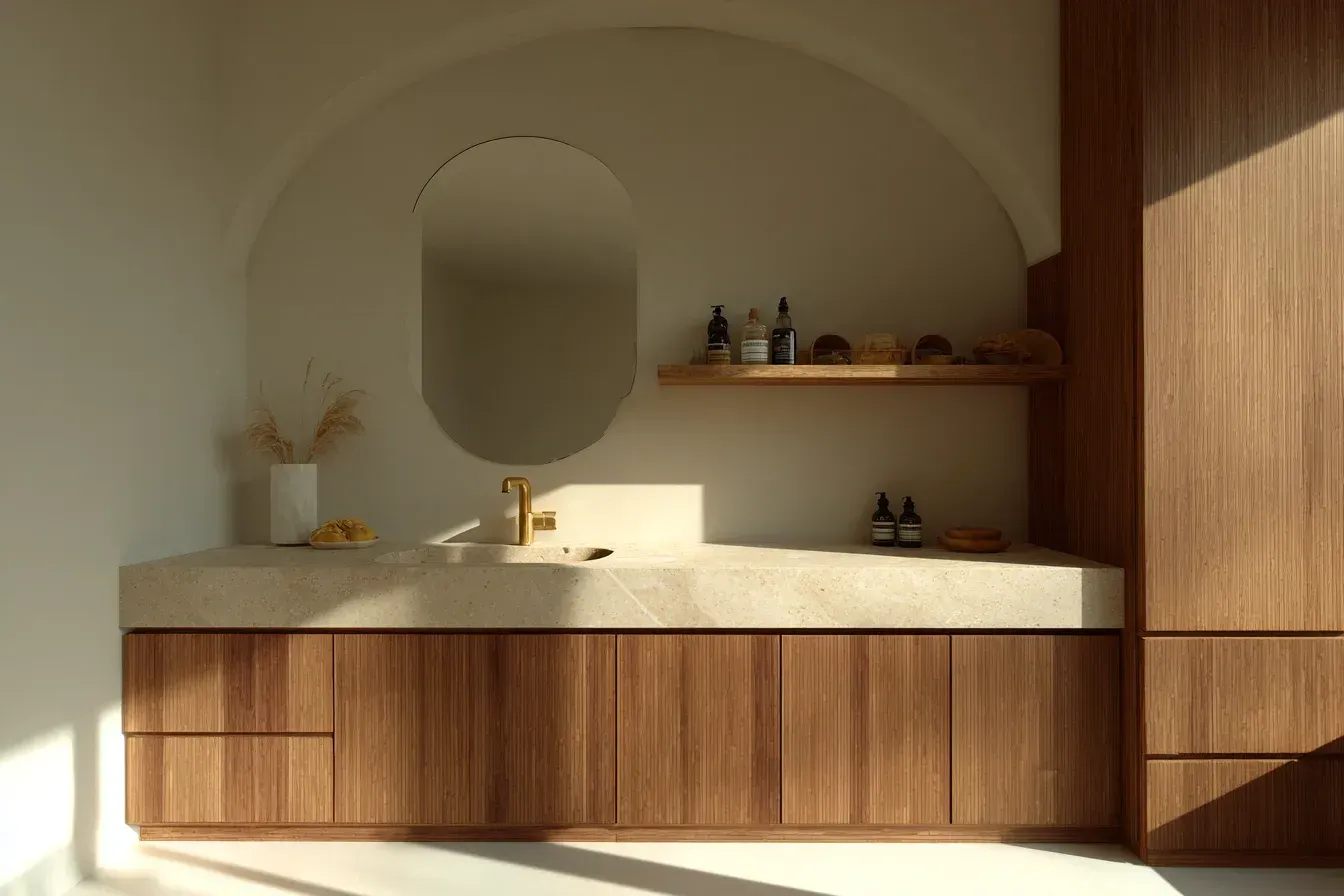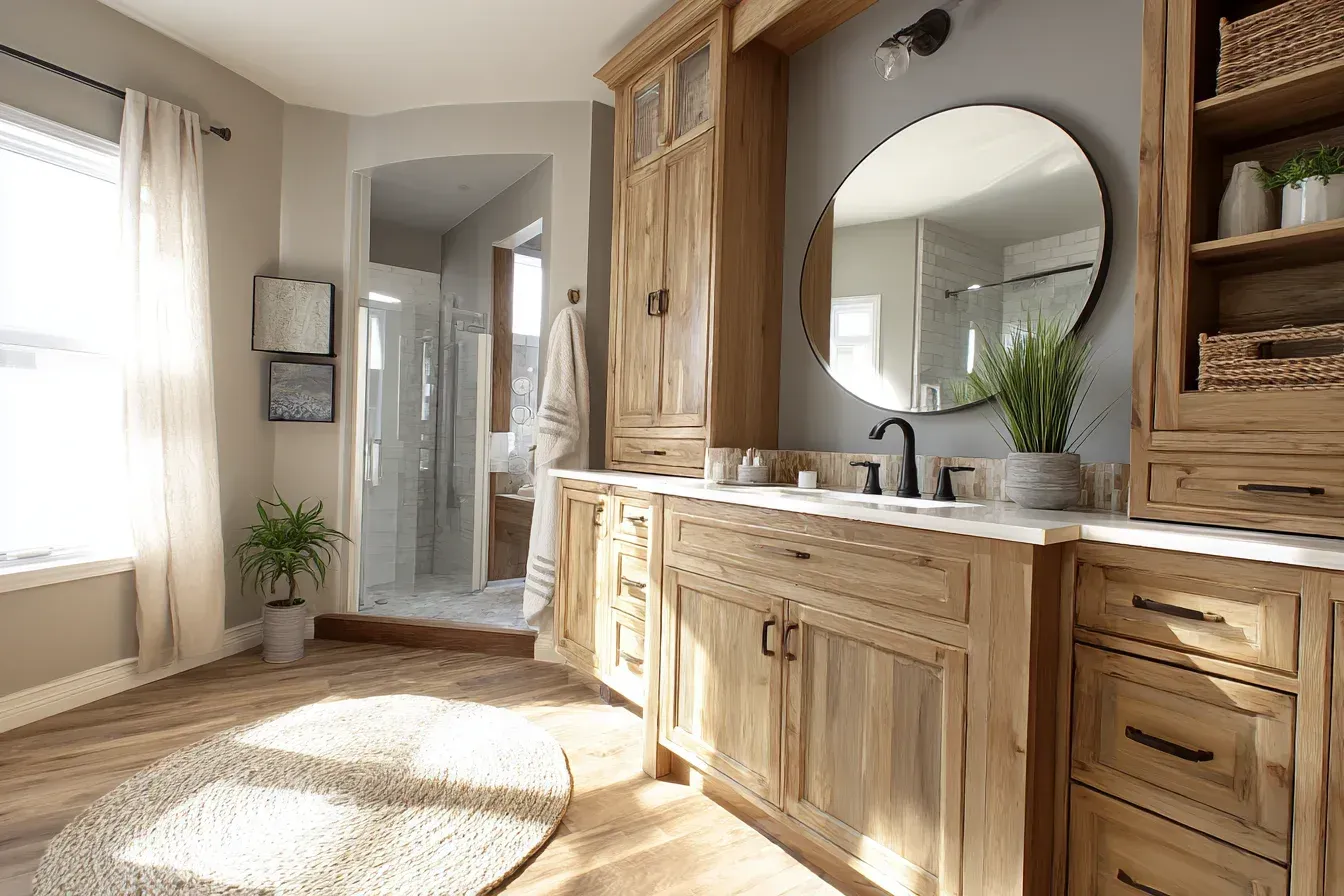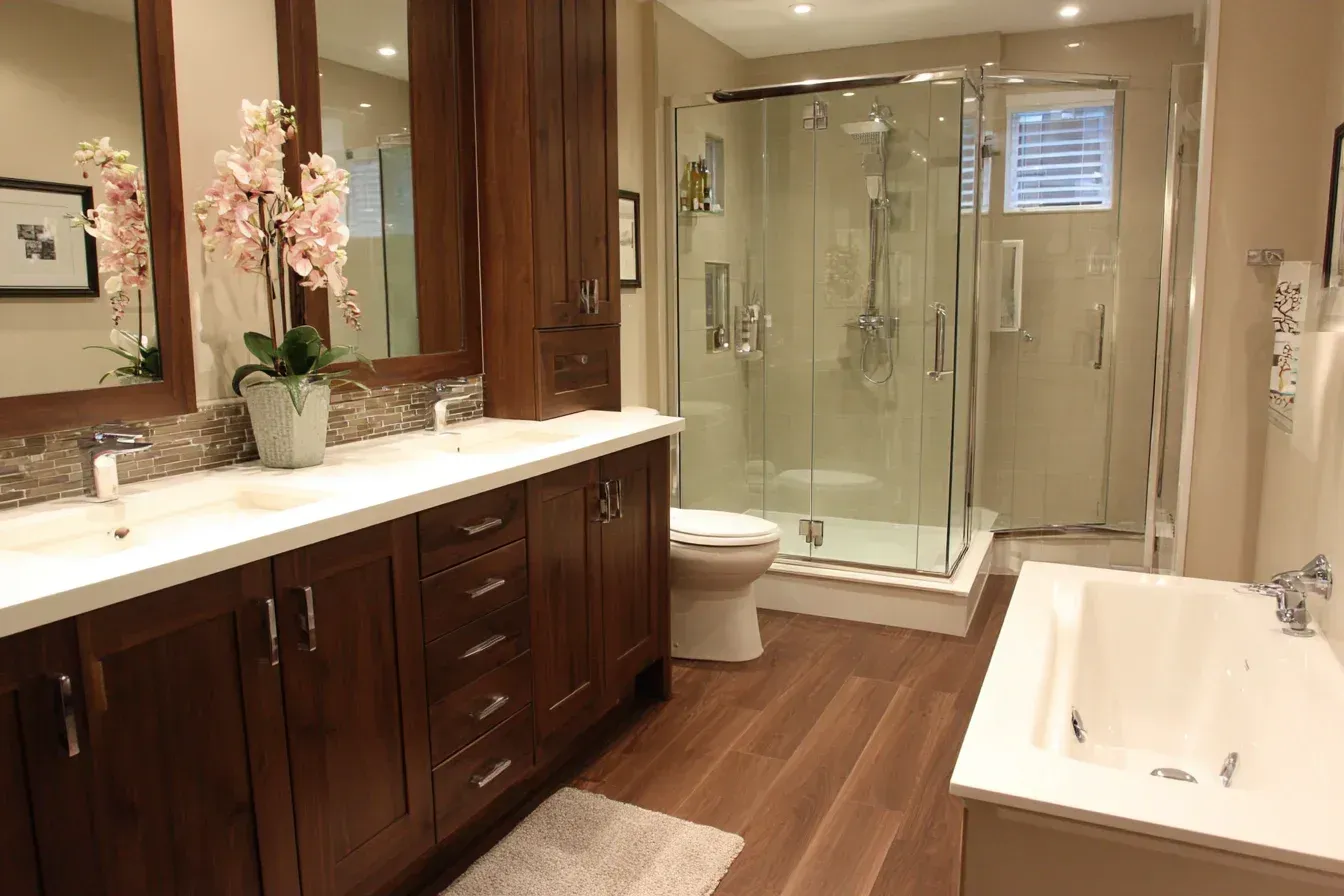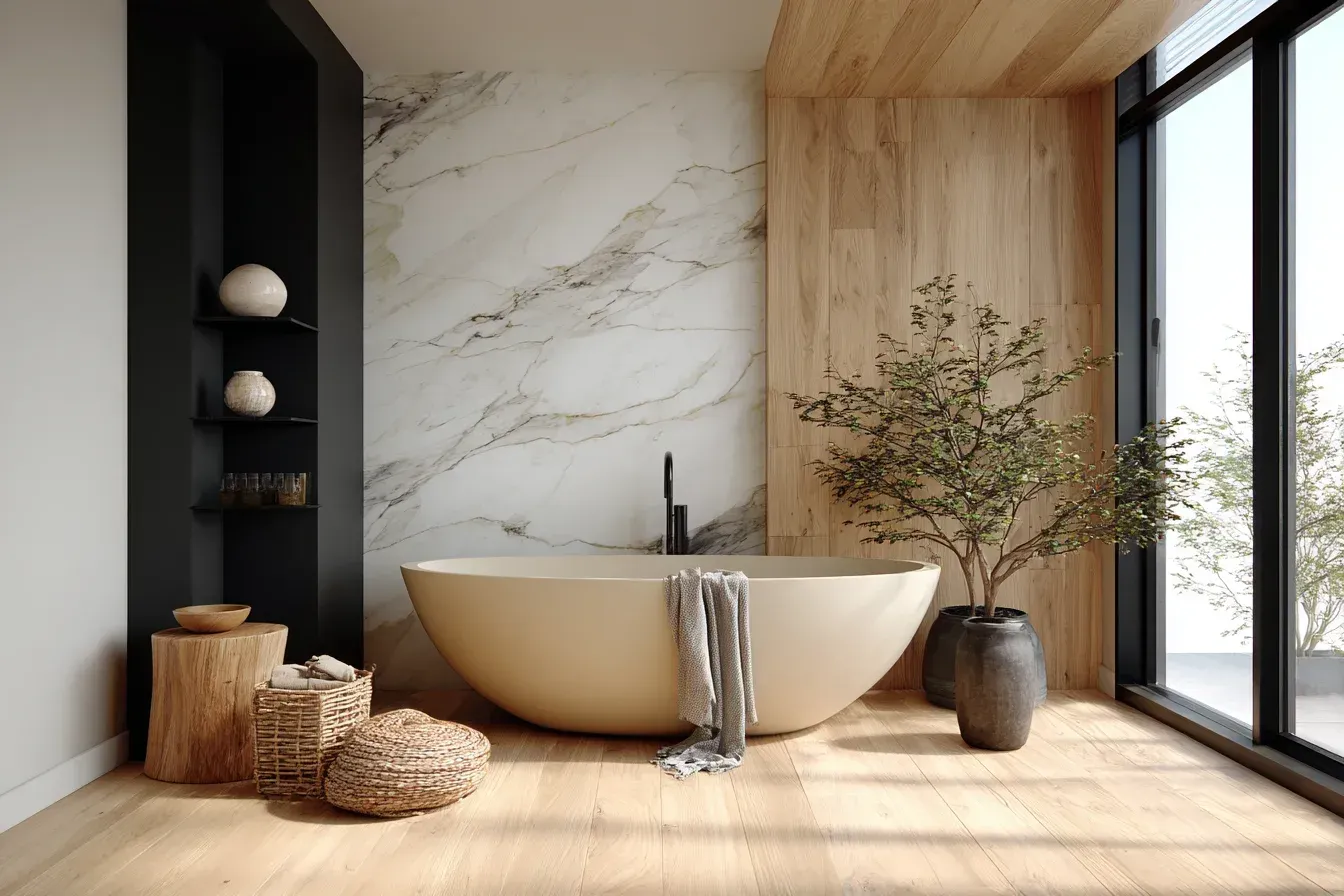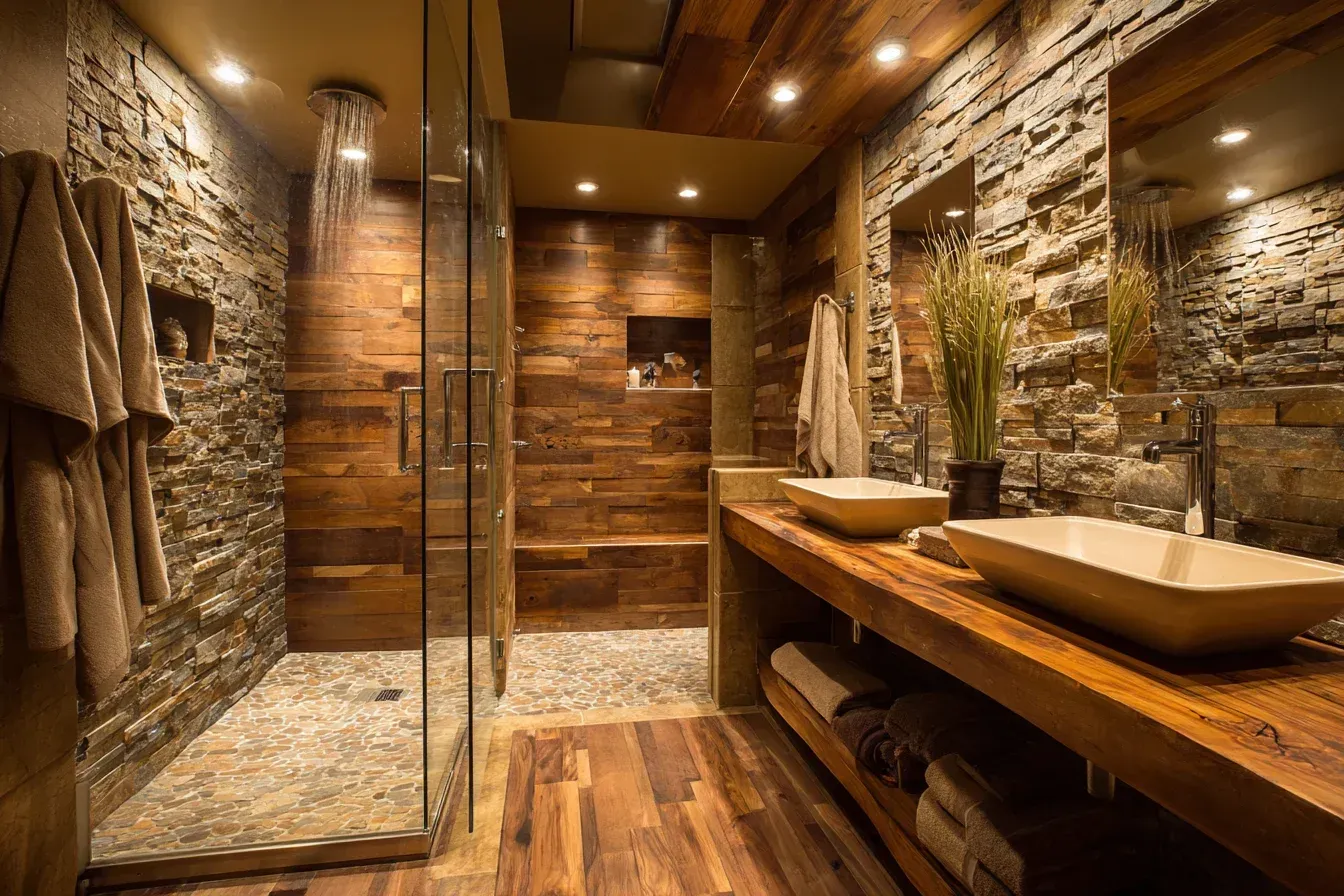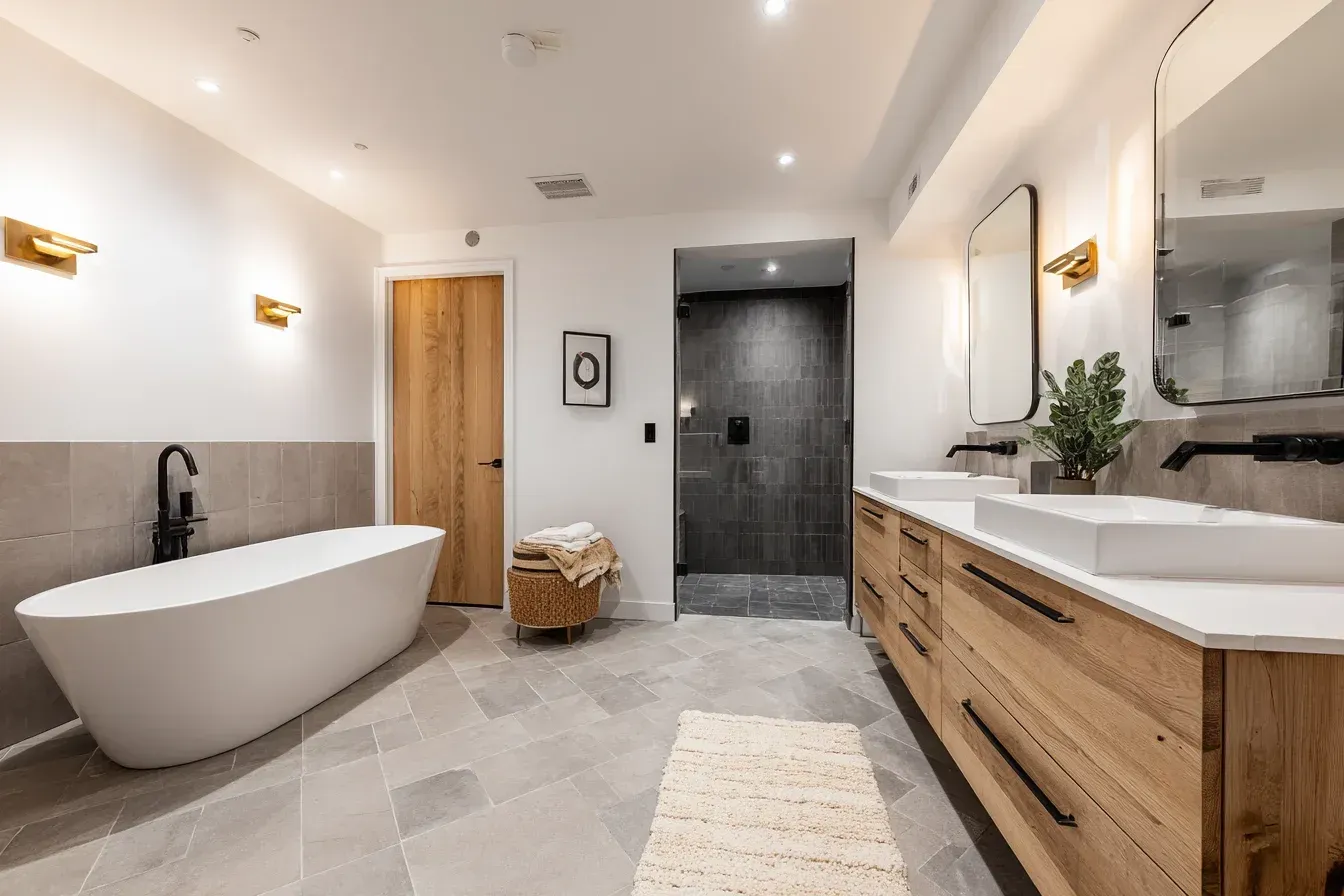Why Good Ventilation Matters in Bathroom Renovations
Ventilation is one of the most overlooked yet most critical elements of a bathroom renovation. While homeowners often focus on design, tile, fixtures, and layout, proper ventilation is what protects your investment long-term.
Without it, moisture accumulates, mold grows, and damage spreads—often silently behind walls, ceilings, and floors. A well-ventilated bathroom stays cleaner, healthier, and far more durable.
This guide breaks down why bathroom ventilation is essential, how it works, common mistakes to avoid, and how to choose the right exhaust fan and airflow system for your new bathroom.
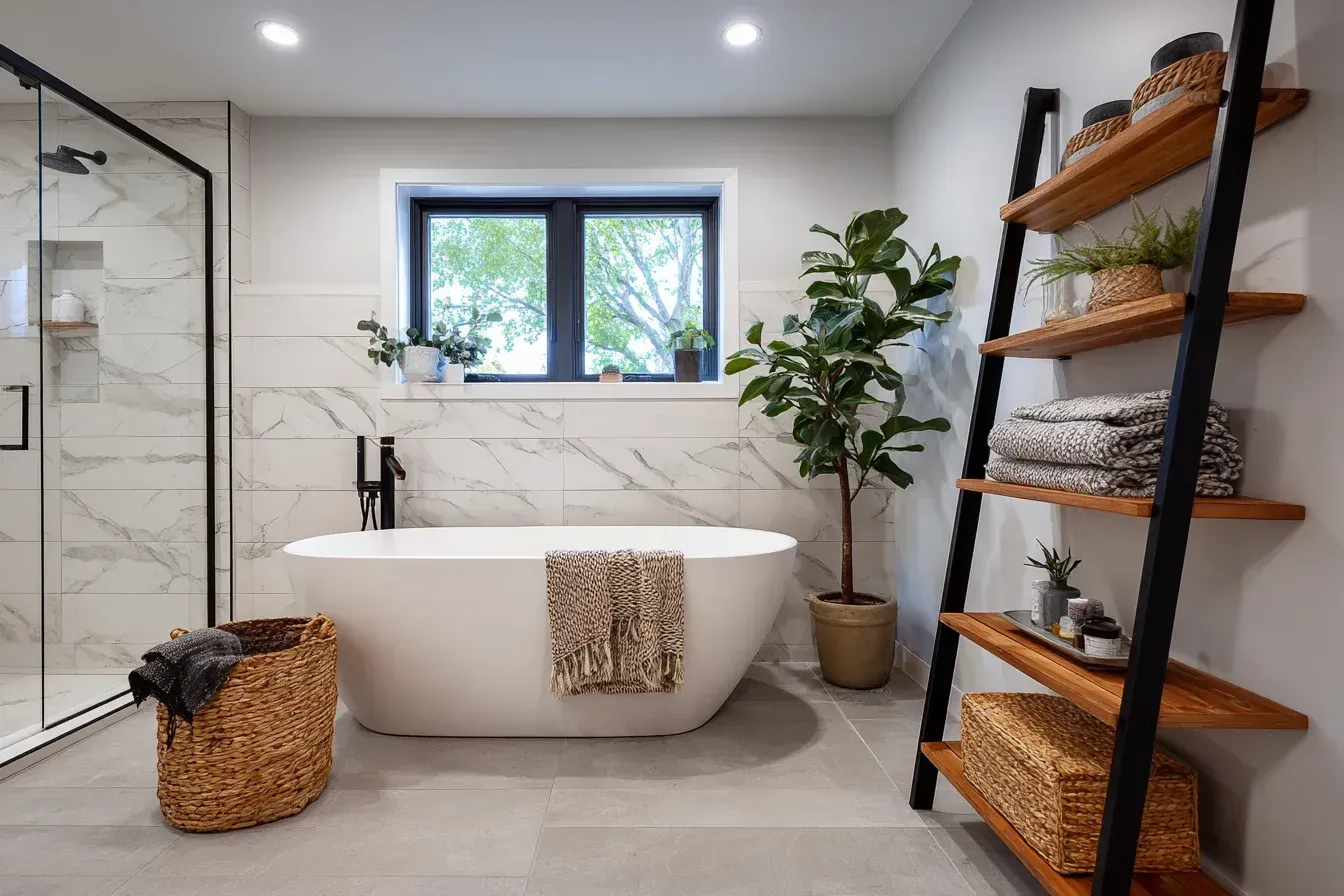
Why Bathroom Ventilation Matters So Much
Bathrooms are the most moisture-heavy rooms in the home.
Everyday moisture sources include:
- Shower steam
- Hot baths
- Running faucets
- Wet towels and bath mats
- Condensation from temperature changes
Without proper ventilation, moisture lingers, leading to serious structural and health issues.
1. Prevents Mold, Mildew, and Bacteria Growth
Moisture is the perfect environment for mold and mildew to grow.
Signs of poor ventilation:
- Dark spots on ceiling or walls
- Peeling paint
- Musty smell
- Persistent humidity
- Mold on grout
- Condensation on mirrors or windows
Why mold forms
Mold thrives when humidity remains above 60%. After a shower, bathroom humidity can spike above 90%—and without a fan, it can stay high for hours.
Good ventilation helps by:
- Removing humid air
- Bringing in fresh air
- Lowering moisture levels quickly
- Preventing mold spores from settling
Proper ventilation keeps your bathroom healthy and safe.
2. Protects Your Renovation Investment
Moisture is one of the top causes of long-term bathroom damage.
Moisture can damage:
- Drywall
- Paint
- Tile grout
- Subfloors
- Cabinets
- Vanities
- Trim and baseboards
- Caulking
Structural risks
Without proper ventilation, moisture becomes trapped in walls, eventually leading to rot and structural weakening. A full bathroom renovation is expensive—ventilation protects it.
3. Improves Air Quality and Comfort
Good air flow removes humidity and odors, creating a more pleasant environment.
Ventilation enhances comfort by:
- Clearing steam from mirrors
- Reducing lingering scents
- Maintaining fresh air circulation
- Making the bathroom more breathable
A well-ventilated bathroom feels clean and comfortable every time you use it.
4. Reduces Maintenance and Cleaning
High moisture levels make cleaning more difficult.
Poor ventilation causes:
- Soap scum buildup
- Moldy caulk
- Grout discoloration
- Hard-water stains
With proper ventilation:
- Grout stays cleaner
- Caulking lasts longer
- Surfaces dry faster
- Less frequent deep cleaning required
Good ventilation means lower maintenance costs and less scrubbing.
5. Prevents Paint Peeling and Wall Damage
Moisture can cause paint to bubble, peel, or crack.
How ventilation helps
- Removes moisture before it penetrates paint layers
- Keeps drywall and backerboard dry
- Prevents continuous condensation
Paint failure is a clear sign the bathroom lacks adequate ventilation.
6. Protects Wood Elements Like Vanities and Trim
Wood swells and contracts in humid environments.
Symptoms of moisture damage to wood:
- Warped cabinet doors
- Swollen vanity drawers
- Cracked trim or baseboards
- Separated joints
Ventilation stabilizes humidity, protecting wood elements across the room.

7. Helps Heated Floors and Electrical Systems Last Longer
Electrical systems can corrode faster in high humidity.
Proper ventilation protects:
- Heated floor wiring
- Light fixtures
- LED mirrors
- Outlet covers
- Switches
- Exhaust fan motors (ironic but true!)
A healthier bathroom environment benefits all your mechanical systems.
8. Keeps Shower Doors and Mirrors Clear
Good ventilation reduces fogging and helps surfaces dry faster.
With poor ventilation:
- Mirrors stay foggy
- Glass shower doors spot quickly
- Water droplets linger on tile
A strong exhaust fan clears steam in minutes.
9. Essential for Bathrooms Without Windows
Windowless bathrooms must have a proper ventilation system.
Because windows provide:
- Natural airflow
- Humidity escape
- Fresh air exchange
Without one, an exhaust fan becomes the bathroom's only defense against moisture.
10. Required by Building Codes
Most building codes require either:
- A functioning operable window, or
- A mechanical ventilation system that vents outdoors
And the fan must:
- Vent to the exterior, never the attic
- Meet airflow standards
- Be sized appropriately for bathroom square footage
Ignoring code requirements can cause inspection problems and affect resale value.
How to Choose the Right Bathroom Exhaust Fan
Choosing the right ventilation fan is essential for performance.
1. Choose Proper CFM Rating (Airflow Capacity)
CFM = cubic feet per minute.
General guideline:
- 1 CFM per square foot of bathroom space
- Minimum 50 CFM for small bathrooms
Examples:
- 50 sq ft bathroom → 50 CFM
- 75 sq ft bathroom → 75 CFM
- 100 sq ft bathroom → 100 CFM
Large bathrooms or ones with multiple fixtures require more.
2. Look for Low Sones (Quiet Operation)
Sones measure noise level.
Choose:
- 0.3 – 1.5 sones for quiet operation
- 2+ sones is noticeable
- 4+ sones is loud
A quiet fan ensures you actually use it.
3. Choose Humidity-Sensing Features
Smart fans turn on automatically when humidity rises.
Benefits:
- Prevents mold
- Automatically manages moisture
- Hands-free operation
- Ideal for kids’ bathrooms
Humidity sensors are highly recommended.
4. Ensure the Fan Vents Outdoors
This is critical.
Never vent a fan into:
- The attic
- The crawlspace
- The wall cavity
- The ceiling void
Moisture will accumulate and cause damage long term.
5. Add a Fan Timer or Smart Control System
Timers ensure the fan runs long enough to remove moisture effectively.
Options include:
- Wall-mounted timers
- Smart home integration
- Motion sensors
- Humidity sensors
Running the fan 20–30 minutes after a shower is ideal.
Other Helpful Ventilation Tips
1. Leave the door slightly open after showering
Promotes air circulation.
2. Use squeegees on shower walls
Reduces humidity and prevents mold.
3. Replace old fans regularly
Most fans last 8–15 years before losing efficiency.
4. Clean the fan cover and motor
Dust buildup reduces airflow.
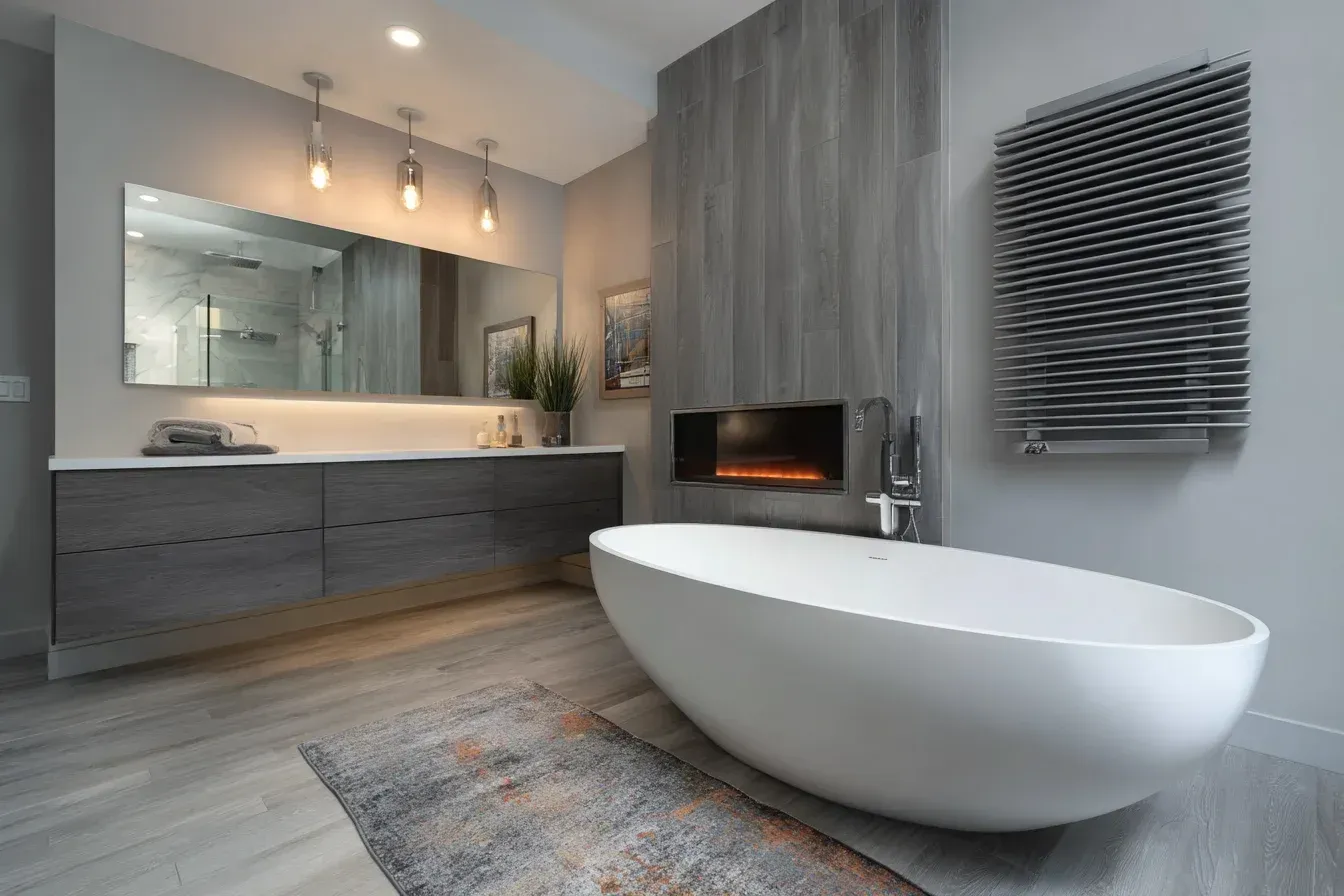
Common Bathroom Ventilation Mistakes to Avoid
1. Undersized fan
Not enough airflow → trapped humidity.
2. Venting into the attic
Extremely dangerous—causes mold and wood rot.
3. No humidity-sensing system
Humidity remains long after showers.
4. Fan not running long enough
A few minutes is not enough to clear steam.
5. Not cleaning the fan
Reduces efficiency by up to 50%.
6. Using weak fans for large bathrooms
Large bathrooms require multiple fans or higher CFM systems.
Final Thoughts: Ventilation Is the Key to a Durable, Healthy Bathroom
Good ventilation is not optional—it’s essential. A properly ventilated bathroom:
- Prevents mold and mildew
- Protects tile, grout, paint, and drywall
- Preserves your renovation investment
- Enhances comfort and air quality
- Reduces maintenance and cleaning
- Complies with building codes
When planning a bathroom renovation, prioritize ventilation alongside tile, fixtures, and layout. It’s one of the smartest investments you can make for the long-term health of your home.
Recent Posts

